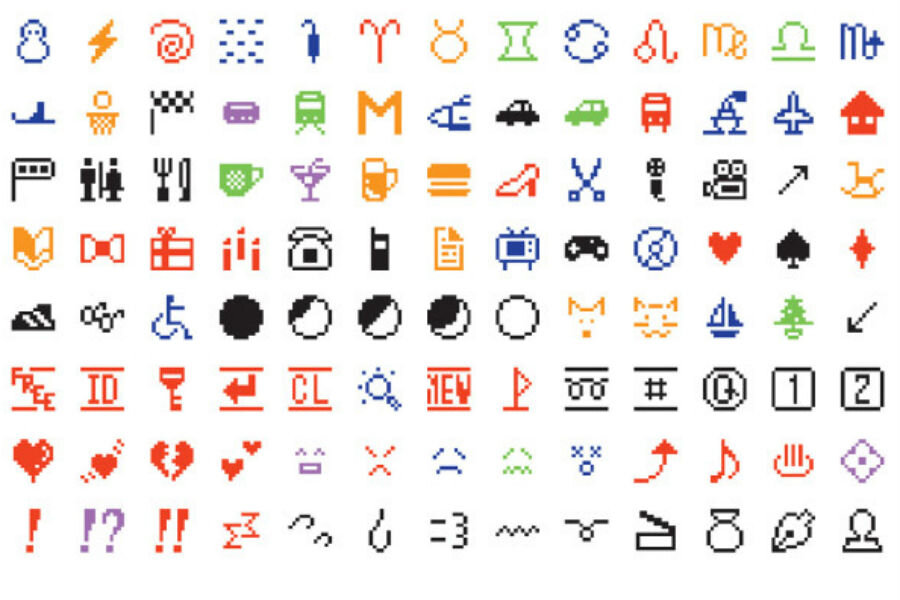Why the Museum of Modern Art added emojis to its collection
Loading...
The Museum of Modern Art announced an addition to its collection this week that made some :-) and others :-( in disapproval: the original set of emoji characters, from 1999.
The 176 original emoji characters – which include a primitive golf club, car, and snowman – are a far cry from the tiny cartoon images sprinkled into teenagers' text messages today, showing just how far emojis have come in cementing their place in modern communication. Even Oxford Dictionaries has acknowledged emojis, naming the popular laughing-so-hard-I'm-crying character "Word of the Year" in 2015.
"Emoji tap into a long tradition of expressive and visual language," said the Museum of Modern Art in explanation of the acquisition. "Images and patterns have been incorporated within text since antiquity."
But not all agree that smiley faces and the like make a positive contribution to the art of communication. Emojis have, on the contrary, been criticized by some for stunting communication and reducing the need for written language among the primarily young people who use them.
"Tens of thousands of years ago, humans communicated in pictures," writes one critic, Kyle Smith, for The New York Post. "The thoughts they sought to convey weren’t complicated. That’s why we call them cavemen. Language offers subtlety, complexity, shades and layers. Leaving the language corner of your brain to grow cobwebs and instead turning your attention to the picture-generating muscles isn’t a bold leap into the future, it’s a giant leap backward: in ambition, in maturity, in evolution."
But some linguists have defended emojis, arguing that they inject a sometimes-needed dose of personality into text messages, emails, and other text-only communications.
"Discourse markers are these little bits of language that convey the tone or the overlying meaning of what we’re saying," Lauren Collister, a socio-linguist from the University of Pittsburgh, told Wisconsin Public Radio last year. "We usually do this in spoken language with our voice or tone. But when you have text only, that’s not really an option. So people started using emoticons as a way to give some emotion or inflection to their writing."
Emoticons – faces typed out in characters, such as :-) – have been around since the early eighties, when a computer scientist named Scott E. Fahlman invented the :-) sequence as a way to mark posts on online bulletin boards that shouldn't be taken seriously. The first 176 emoji characters, first introduced by Japan's national phone company, appeared on the scene 17 years laters.
But the concept behind emojis, and the desire to create a universal language through pictures, has been around much longer, linguist Ben Zimmer pointed out to New Republic.
"There’s an old utopian ideal that we could create a kind of a universal pictorial language," Mr. Zimmer said. "It's a recurrence of a very old impulse. I don't see it as a threat to written language, but as an enrichment. The punctuation that we use to express emotion is rather limited."
Now, as emojis become more and more ubiquitous in our everyday communications, many have begun to view them as a way not only express thoughts, but to influence the thoughts of texters themselves. Emojis "may have started out as playful," wrote Rowena Lindsay for The Christian Science Monitor earlier this year. "Over the years of their young life, however, they have also become a reflection of cultural change and way for the tech world to take a stance on social justice issues."
Apple has, in recent years, updated its emojis to more accurately reflect the diverse makeup of iPhone users by adding additional skin tone options for human emojis. In August, it announced that it would add more than 100 new emojis in the next iOS 10 update, including a rainbow flag and more images of women in professional roles.
"It’s extremely limiting when the only professional roles for women are bride, princess and playboy bunny," Jennifer 8. Lee, a former New York Times journalist who joined the Unicode Consortium's official Emoji subcommittee after lobbying for a dumpling emoji last year, told WGBH. "It becomes part of the coded vocabulary in the global visual language. When you create words and concepts – how people think is shaped by the language. People see reflections of themselves in emojis."






